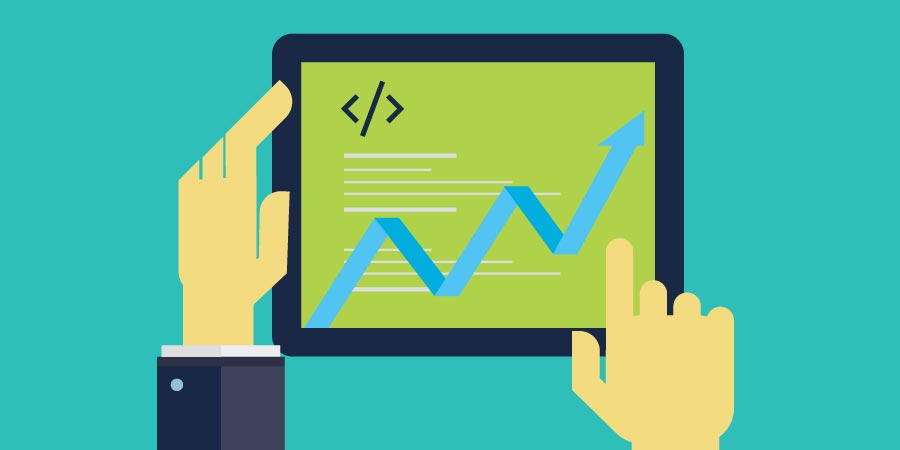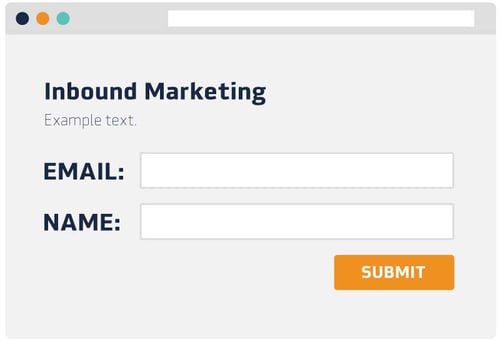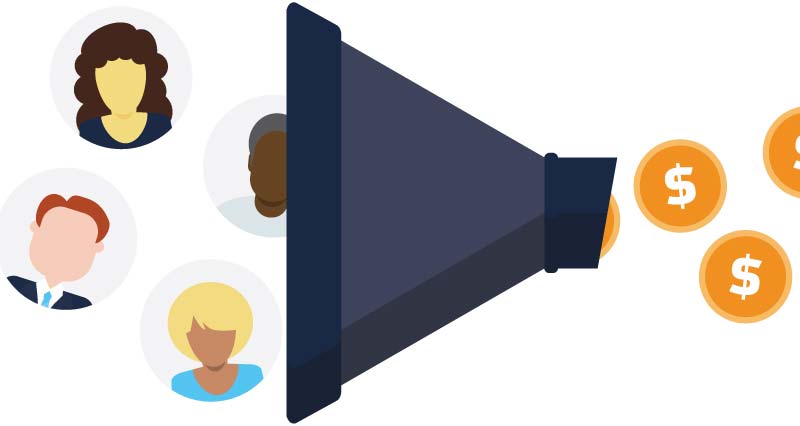Website Conversion Rate Optimization Can Boost Your B2B Business
 Taylor
|
Taylor
|

Optimize your online conversion rate to more efficiently move prospects to customers.
Over the years, the word "conversion" has become a buzzword. Marketers have flooded the market with jargon around the concept of online conversion to the point of confusion. In this article, we'll break down this jargon to help clarify meanings and explain why conversions matter in digital marketing strategies.
Most simply, conversions are measurable actions that move prospects closer to becoming customers. It doesn't matter if you're trying to convert a website visitor to a prospect, a prospect to a lead, a lead into a more educated lead, or a lead into a customer. Your digital marketing strategy or inbound marketing strategy should be focused on creating measurable and meaningful conversions. Some actions that are considered conversions include:
- When someone subscribes to a monthly newsletter
- When someone clicks a call-to-action
- When someone downloads a white paper or ebook
- When someone completes a consultation form
What Is An Online Conversion?
One of the best ways to define online conversions is two-fold: 1) it changes or strengthens the relationship between a prospect and your company, and 2) you can record and measure it.
When talking to manufacturers and B2B businesses about their digital marketing strategies, we often discover that the second part — recording and measuring — is often overlooked. Yes, it's important to nurture people through the buyer's journey from prospect to customer, but you have to have a way to monitor their position so you can adjust your strategy if needed.
Common Online Conversion Points
Submit a Form
If you're familiar with the inbound marketing methodology, then you know its core stages are "attract, convert, close, and delight." The convert stage is described as the point at which a website visitor completes a form, exchanging their information for a valuable asset (e.g., ebook, guide, white paper, checklist, free consultation, product quote, etc.). This takes visitors one step closer to better understanding their problem and ways to solve it, and it allows you to begin tracking their interactions. With the right strategy in place, visitors will naturally progress through awareness and consideration stage conversion points, ultimately leading them to a decision — ideally your product or service.
Bear in mind, while the four-step methodology (attract, convert, close, delight) is highly effective, it's not quick. B2B businesses, industrial equipment companies, and manufacturers know the nurturing process isn't fast. It's often lengthy and requires quite a bit of nurturing.

Small Series of Coordinated Steps
As experts in the B2B and manufacturing marketing space, we know there's no magic formula for fast sales. They are often generated by building quality relationships with prospective customers over time through various channels and content. By providing valuable content over a series of multiple, but smaller conversion points — you're not only able to track and measure these actions, but it helps build relationships.
Incremental steps through the buyer's journey allow you to track lifecycle stages (if you have software like HubSpot). Once you're able to track conversions, you can optimize and tailor your marketing strategies based on your audience's behavior and needs.
Turning Visitors Into Customers
In the B2C marketplace, you'll often see the term "conversion" thrown around loosely when talking about visitors turning into customers. But as is often the case in the B2B world, it's not as simple. Marketers in the B2B space often view the conversion process by measuring the percentage of customers that make intermediary steps toward purchasing (e.g., filling out a "Request a Quote" on an industrial site).
Marketers in the B2C world often use very different selling strategies than those looking to sell a significant or ongoing investment like a B2B service plan or an expensive piece of equipment. In these cases, marketing needs to focus on lead nurturing and relationship building, positioning the business as the solution to customers' problems. This is why the term conversion isn't necessarily helpful for B2B and manufacturing companies.

The Value of Conversion Optimization for B2B Marketing
Conversions are a way to categorize prospects, helping businesses to understand how people move through the buyer's journey and ways to nurture them along the journey. With good conversion rates, it usually means your website is performing effectively and delivering value to its visitors, resulting in a higher volume of qualified leads at a lower acquisition cost.
When is the best time to start looking at conversion rate optimization? The short answer is: whenever your business starts attracting traffic. You need website visitors converting into leads who will become customers. And everyone should be striving to accomplish this process in the most efficient and consistent way possible.
Long-term growth isn't sustainable by blindly applying best practice tactics. You need to spend time understanding your users and customers. By learning as much as you can about their concerns and hesitations, you're able to address the core problems they're facing and deliver the solutions they need. User-centric data and insights can drive extremely high value for improving conversion rates.
What are the best ways to gather this customer data? There are a couple of tools that are helpful when looking at conversion rate optimization. We've comprised a list of the top tools and how they can help your conversion optimization.
1. Quantitative Tools Share Insight Into What is Currently Happening
- General analytics tools like Google Analytics track website traffic
- Heat map tools that collect information like the number of clicks, scrolls, and movement on a page
- Funnel tools measure when visitors drop off from a particular sales funnel
- Form analysis tools that track form submissions
- Customer satisfaction tools (CSAT)
- Promotion monitoring tools that use the Net Promoter System to measure the likelihood of people recommending your business
2. Qualitative Tools to Uncover Why Things Happen
- Website feedback tools to rate the buying experience
- Session recording tools that show how individual users use your website
- Usability testing tools where a panel of potential or current customers can voice their thoughts and opinions on your website
- Online reviews tools where you can read more about people’s experience of your brand and product
3. Measurement Tools to Gauge the Success of Tactics
- A/B testing tools that help you test different variations of a page
- Comparison tools like website heat map + session recording platforms that allow you to compare variations and user behaviors
- Conversion tracking tools that track and monitor conversions

Make sure your website is effectively converting leads, keeping your sales pipelines full
It's your job to figure out what your customers respond to, what words or phrases compel them, and what moves them to take action. As you learn how your website visitors think and what drives them to act, you can improve conversion points, making your conversation rate the best it can be.
Knowing where to start can be tricky though, it's hard to analyze and understand data around conversion optimization. It can feel overwhelming. We get it. That's why we recommend taking incremental steps towards improvements. Start by getting your website audited by our marketing and website team to see the current state of your conversion paths. From there, we can discuss recommendations and opportunities you might be missing.
More reading:
Subscribe to Our Blog
Stay up to date with the latest marketing, sales, and service tips.


